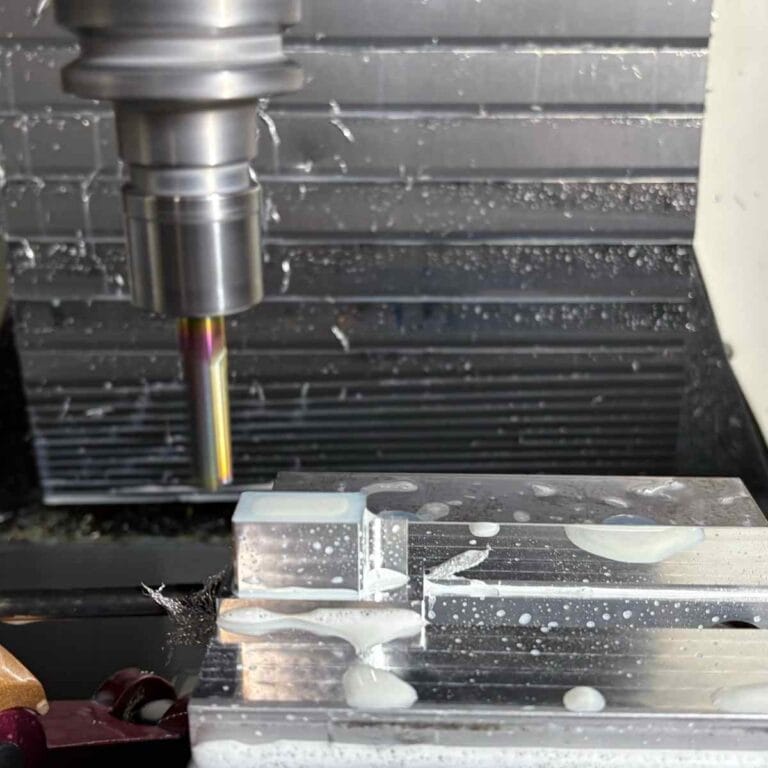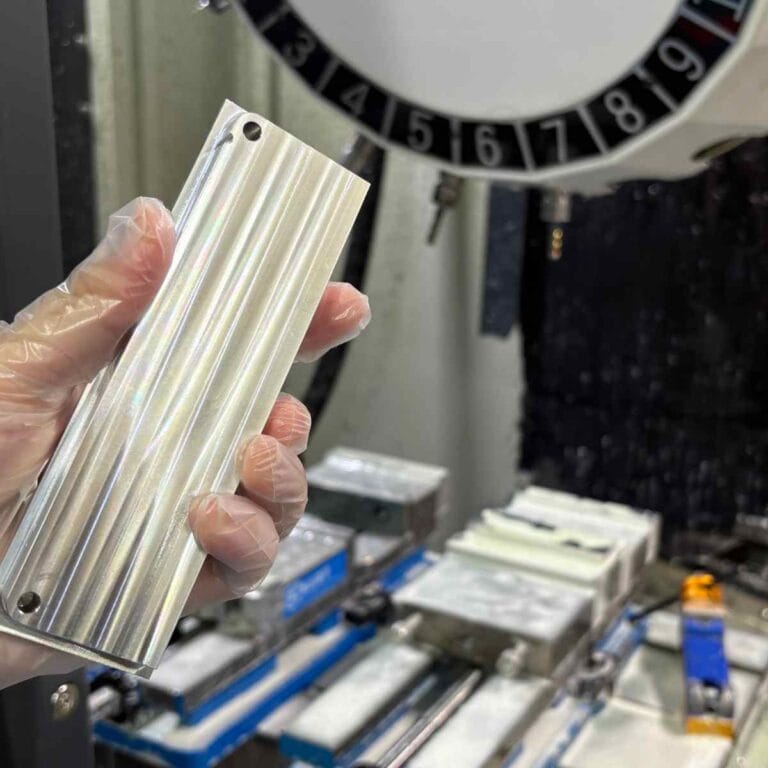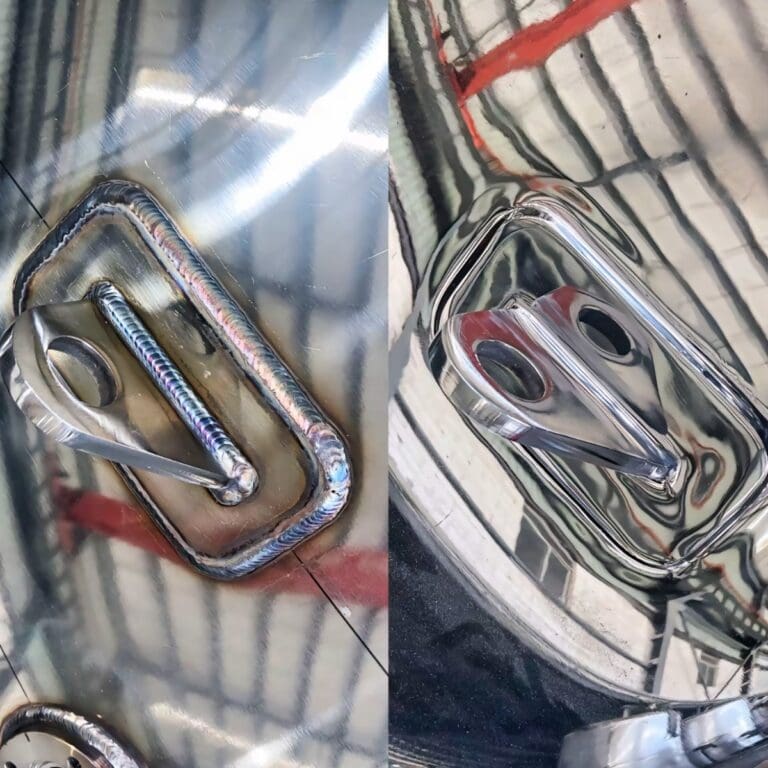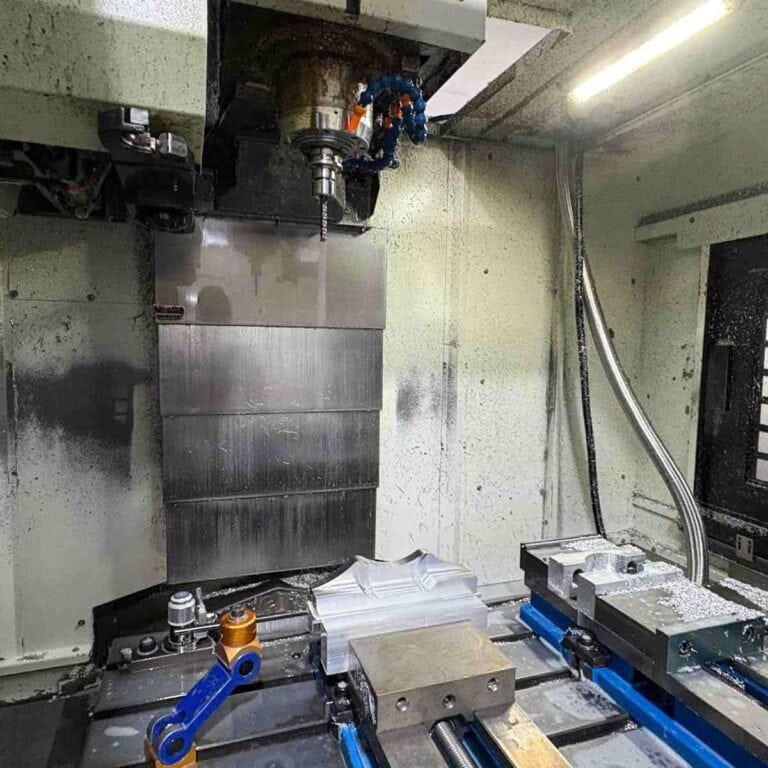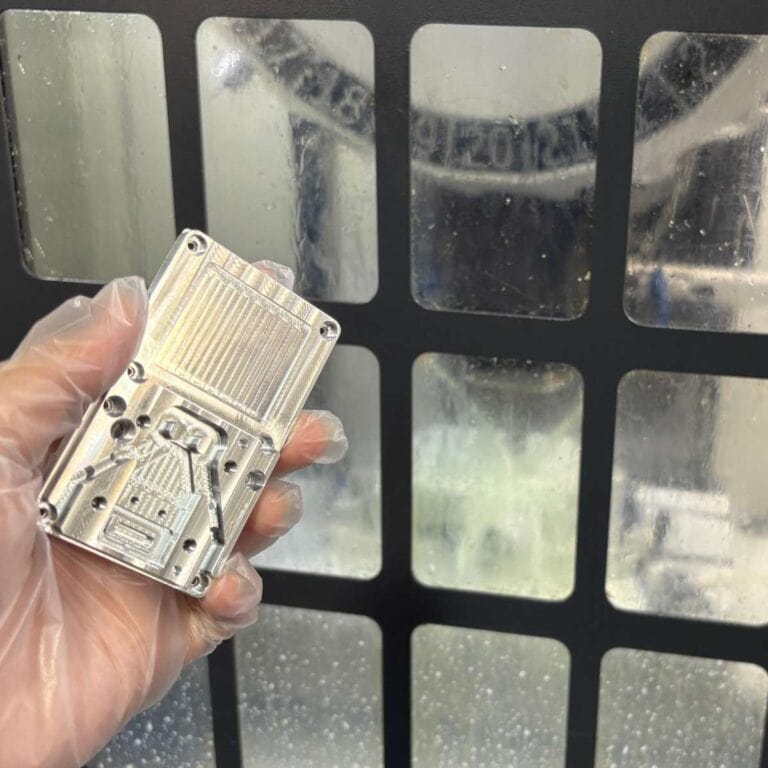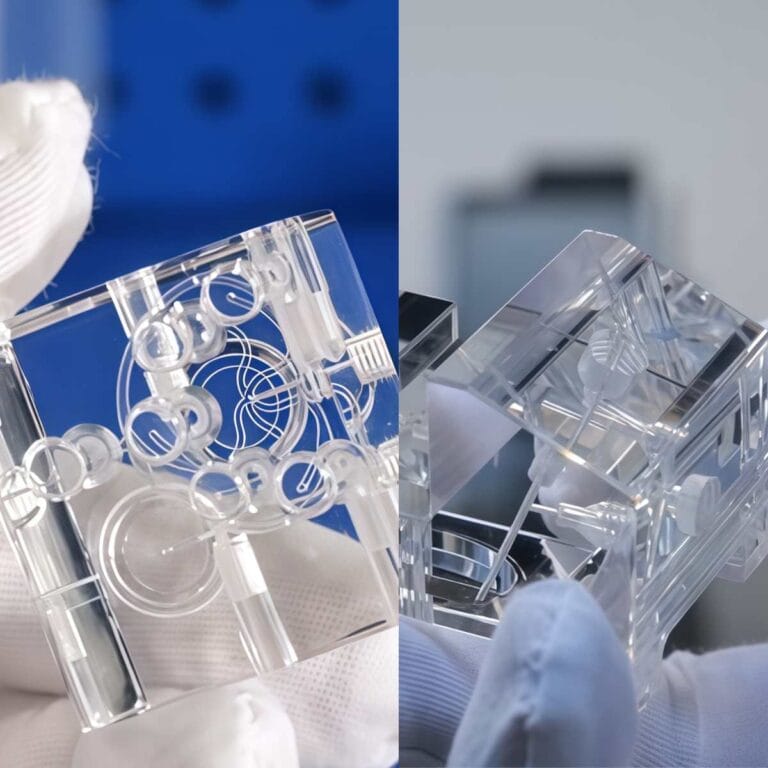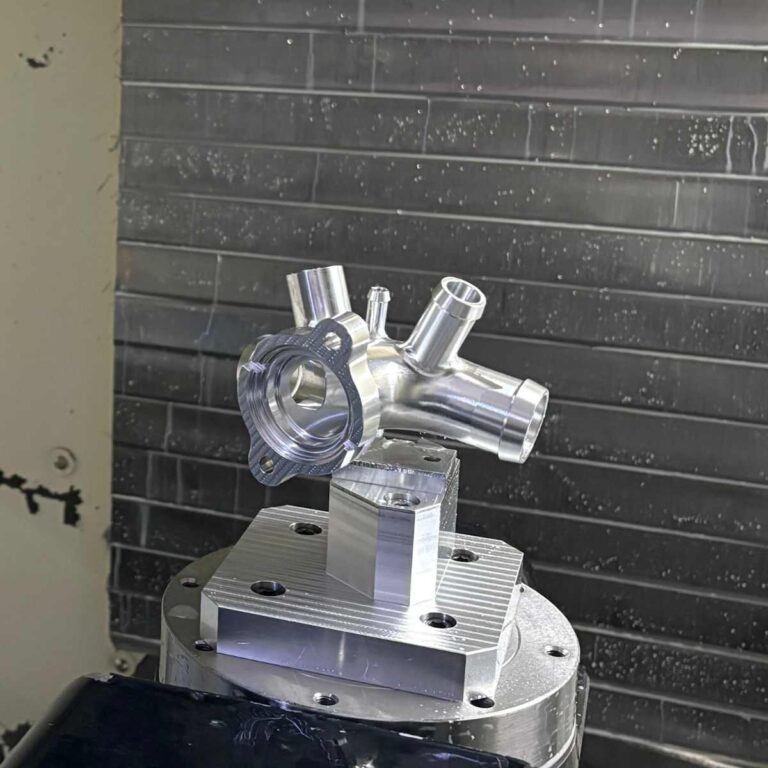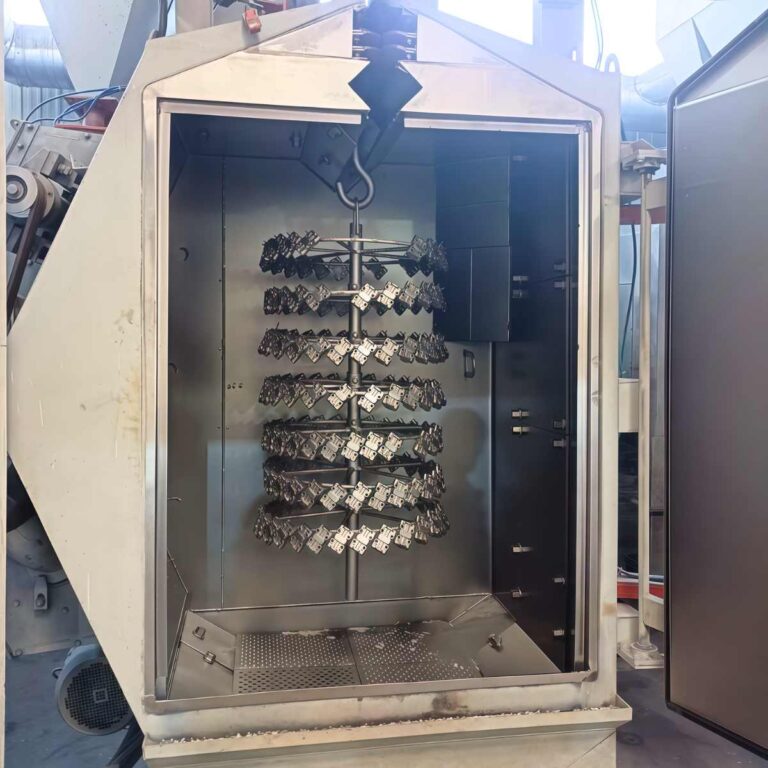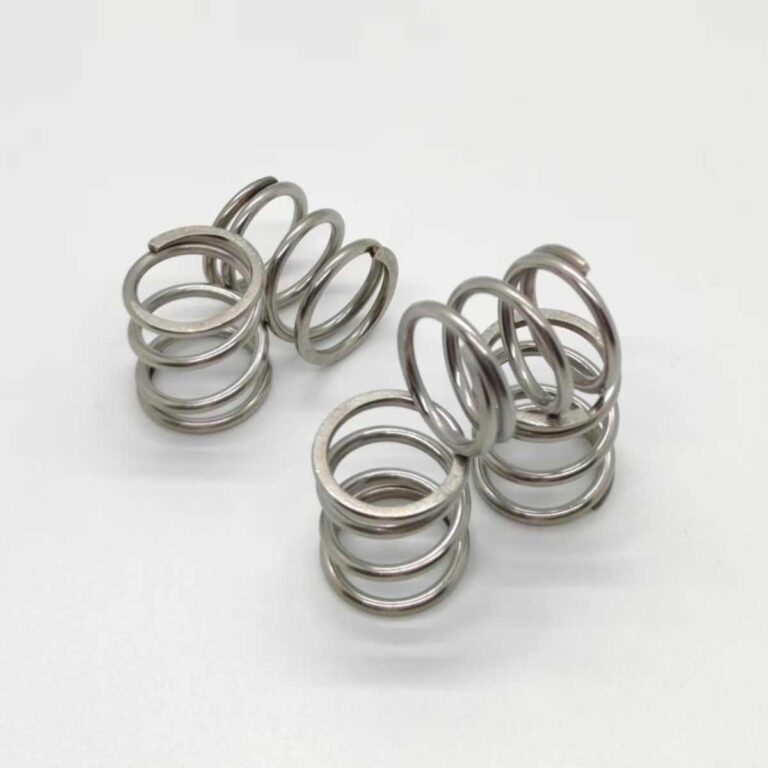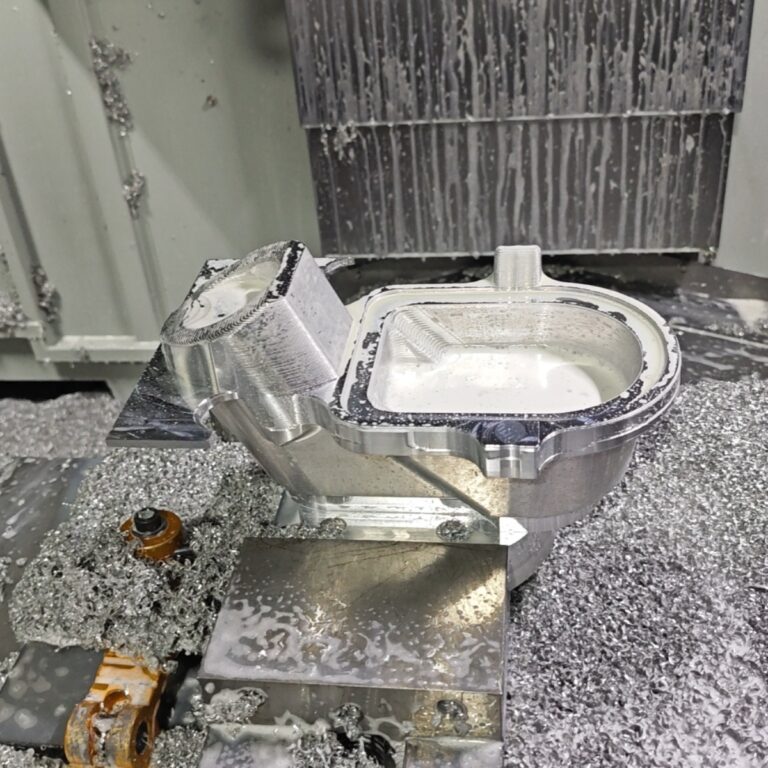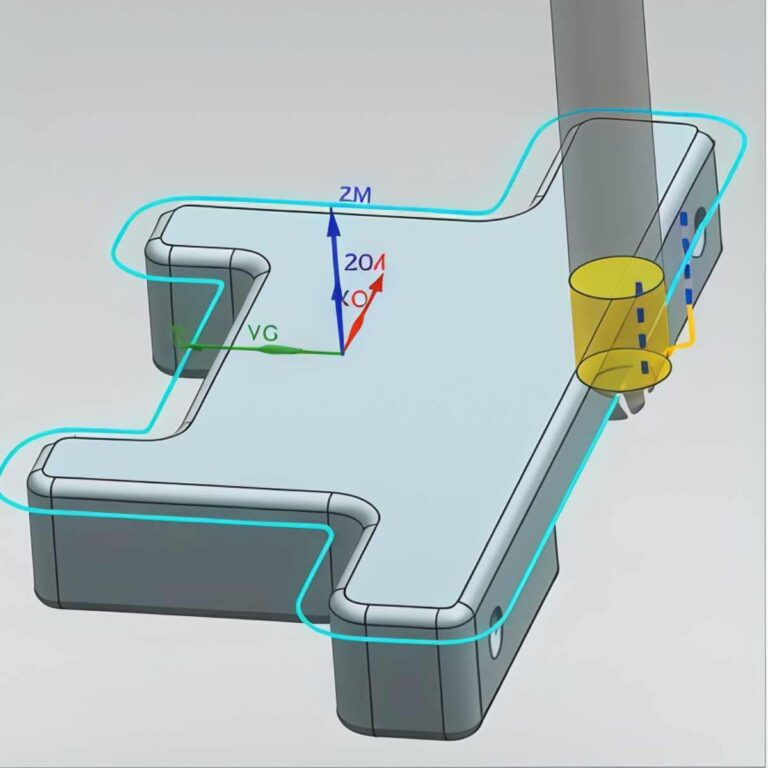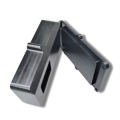Reaming is a precision finishing process used to refine the size, roundness, and surface finish of pre-drilled holes. It’s essential when tight tolerances and smooth finishes are critical—such as in aerospace, automotive, and medical components. In this article, I’ll walk you through what reaming is, how it works, what tools to choose, its applications, and the common pitfalls to avoid. Whether you’re new to machining or refining your technique, this article will help you master reaming for high-quality holes.
What Is Reaming
Reaming is a high-precision hole-finishing method used to slightly enlarge and smooth pre-drilled holes. It delivers tight tolerances (±0.005mm) and fine surface finishes (Ra 0.4µm). Unlike drilling or boring, which focus on shaping or enlarging holes, reaming optimizes both accuracy and finish, making it a reliable, efficient choice for achieving production-quality holes in machining.
Function Of Reaming
Improves Dimensional Accuracy
Reaming is used to refine an existing hole to a high-precision diameter, commonly achieving tolerances of ±0.005 mm or tighter. It is ideal for achieving H7 fits or tighter in precision assemblies.
Enhances Roundness and Concentricity
Compared to drilling or boring, reaming provides superior control over hole roundness and alignment, making it suitable for components requiring rotational accuracy or tight alignment.
Optimizes Surface Finish
Reamed holes can reach a surface roughness of Ra 0.2–0.4 µm, suitable for applications involving seals, sliding bearings, or high-speed rotating shafts.
Ensures Consistency in Mass Production
Thanks to the stable geometry of reamers, the process delivers consistent hole sizes across batches, which enhances product quality and assembly reliability.
Balances Efficiency and Precision
Reaming offers a faster and more economical alternative to processes like honing, while still delivering high precision—making it the preferred solution for most industrial fine-hole finishing tasks.
Reaming Process Explained
Proper reaming requires a precise workflow to ensure accuracy. Key steps include secure clamping, pre-drilling 2–3% smaller, correct tool selection, and accurate alignment. Reaming uses slower speeds, higher feed, and effective lubrication. Final inspection confirms tolerances within ±0.005 mm—critical for precision parts like those in aerospace.
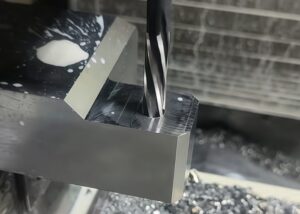
Work Principle Of Reaming
Minimal Material Removal (Chip Thickness: 0.1–0.5 mm)
Reaming removes only a thin layer from the hole wall—typically 0.1 to 0.5 mm in diameter.
This small chip load minimizes heat generation and reduces tool wear.
Guided Cutting Action
Reamers do not lead the cutting path, they follow the pre-drilled hole.
The front of the reamer includes a pilot or guide section that stabilizes tool alignment and prevents deflection.
Multi-Flute Engagement
Multiple cutting edges (usually 4 to 8 flutes) engage the material simultaneously.
This distributes cutting forces evenly, reducing vibration and improving hole geometry.
Shearing with Burnishing Effect
In addition to cutting, reamers often have chamfered or relief lands that smooth the hole surface after cutting.
This produces fine finishes down to Ra 0.2–0.4 µm, ideal for precision fits.
Axial Cutting Force Dominance
Reaming generates primarily axial forces, typically 30–50% lower than drilling.
This makes it suitable for thin-walled or delicate components that are sensitive to radial stress.
Controlled Cutting Parameters
Reaming is performed at low cutting speeds (typically 30–80 m/min) and moderate feed rates (0.05–0.2 mm/rev).
These parameters ensure high surface quality while maintaining tool life and dimensional consistency.
By combining low-stress cutting with high geometric guidance, reaming achieves accurate, round, and smooth holes efficiently—especially critical for press-fit assemblies and precision alignment features.
Reaming Process
Workpiece Clamping
Proper clamping is essential for precision reaming. Even slight vibrations—over 5 µm—can cause chatter, tapered holes, or poor surface finish. Fixtures must be rigid, with total indicated runout (TIR) kept under 0.01 mm for tight-tolerance jobs. Use soft jaws, hydraulic clamps, or tailored fixtures to ensure stability. For long parts, apply tailstocks or steady rests to prevent flexing. Reliable clamping directly affects hole accuracy, especially when aiming for tolerances of ±0.005 mm and Ra ≤ 0.4 µm.
Pre-drilling or Boring
Before reaming, the hole must be drilled or bored to 2–3% smaller than the final diameter. For instance, a Ø12.00 mm target hole should be pre-machined to Ø11.64–11.76 mm. Undersizing ensures sufficient material (typically 0.15–0.30 mm) is left for the reamer to cut evenly. Excess material increases torque and tool wear, while too little may cause poor finish or chatter. Optimal pre-hole concentricity and straightness are also critical—TIR should be within 0.02 mm.
Tool Selection
Choosing the correct reamer depends on required tolerances (e.g., ±0.005 mm), workpiece material (e.g., steel, aluminum, titanium), and production volume. For hard metals or high-volume runs, carbide or PCD reamers offer longer life and consistent surface finish (Ra ≤ 0.4 µm). For prototypes or soft materials, HSS reamers may be sufficient. Tool geometry, flute type, and coating must also align with cutting speed and chip evacuation needs.
Reamer Setup and Alignment
Proper alignment is critical—reamers naturally follow the existing hole path. Even a 0.01 mm misalignment from drilling can result in taper or oversize. Using floating holders compensates for minor axis errors, while precision collets ensure concentricity below 0.005 mm. Runout should be checked with a dial indicator, total indicated runout (TIR) must be ≤ 0.01 mm for high-precision applications like H7 fits.
Reaming Operation
Reaming is typically performed at 40–80 m/min cutting speed for carbide tools in steel, about 50% of drilling speed. The feed rate is often 0.2–0.5 mm/rev, nearly twice that of drilling. Excessive speed increases wear and reduces accuracy, while too low feed causes chatter. Maintaining a steady feed and adequate coolant ensures dimensional accuracy within ±0.005 mm and surface finish of Ra 0.4 µm or better.
Chip Removal and Lubrication
Effective chip evacuation is essential, especially in deep-hole reaming. Without proper removal, chips can cause tool deflection or surface damage. For holes deeper than 3×D, high-pressure coolant (≥20 bar) or cutting oil is recommended. Emulsion-based coolants improve flushing and reduce friction. Consistent lubrication minimizes heat buildup and maintains dimensional accuracy within ±0.005 mm while extending tool life by up to 30%.
Inspection
Post-reaming inspection ensures the hole meets strict quality standards. Dimensional accuracy is verified using calibrated plug gauges, typically in 0.01 mm steps. Surface roughness is measured with a profilometer, aiming for Ra 0.2–0.4 µm. For aerospace components, tolerances are often within ±0.005 mm. Consistent inspection prevents assembly issues, improves fit reliability, and ensures compliance with ISO 286 and AS9100 standards.
Types Of Reamers
Different reamer types suit various materials and tolerances. Hand and machine reamers handle manual or rigid setups. Floating and adjustable reamers aid in misalignment and size control, while carbide and shell reamers are used for hard materials or large bores. Proper selection boosts precision and efficiency.
| Reamer Type | Application Scenario | Suitable Materials | Key Advantages |
| Hand Reamers | Manual finishing, toolmaking, prototyping | General-purpose | Low cost, flexible use in low-volume tasks |
| Straight-Flute Machine Reamers | Rigid setups, short chipping operations | Cast iron, brass | Simple geometry, ideal for brittle materials |
| Helical-Flute Reamers | Through-holes, deep hole reaming | Ductile metals like steel, aluminum | Efficient chip evacuation, reduced chatter |
| Floating Reamers | Misaligned spindles or flexible machines | All metals | Self-aligning, improves precision despite misalignment |
| Adjustable Reamers | Custom-diameter finishing with slight tolerance variation | All metals | Versatile, reusable for multiple diameters |
| Carbide Reamers | Long production runs, hard materials | Hardened steel, titanium | High tool life, superior finish, wear resistance |
| Shell Reamers | Large bore machining, modular systems | Large metal parts | Replaceable cutting heads, cost-efficient for big parts |
How To Choose The Right Reamer
Proper reamer selection ensures tight tolerance and surface quality. Use HSS for soft metals, carbide or PCD for harder ones. Maintain 0.2–0.5 mm stock removal to avoid tool damage or rubbing. Choose flute geometry based on hole type—helical for through-holes, straight or reverse for blind holes to manage chips.
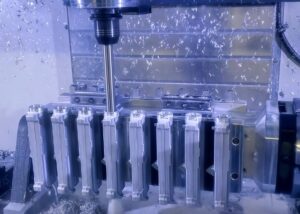
Material And Hole Diameter
Selecting the proper reamer material and size directly impacts surface finish, tool life, and dimensional accuracy. The choice should align with the hardness, abrasiveness, and thermal conductivity of the workpiece material:
Soft Metals (e.g., Aluminum, Brass, Mild Steel ≤ 200 HB):
Recommended Tool: HSS (High-Speed Steel)
Benefits: Cost-effective, easy to resharpen, sufficient for low-to-medium volume runs.
Typical Hole Diameter Range: Φ1 mm – Φ20 mm
Medium Hardness Materials (e.g., Carbon Steel, Stainless Steel 200–300 HB):
Recommended Tool: Cobalt-alloyed HSS or Solid Carbide
Reason: Improved wear resistance, better heat resistance.
Hard Alloys & Composites (e.g., Inconel, Titanium, GFRP/CFRP ≥ 350 HB):
Recommended Tool: PCD (Polycrystalline Diamond) or Solid Carbide
Benefits: Maintains sharpness over long runs, handles abrasive fibers, minimizes thermal deformation.
Tool Life: Often 5–10× longer than HSS in such materials.
Optimal for hole diameters: Φ3 mm and above, due to rigidity needs.
For micro-holes below Φ1 mm, ultra-fine grain carbide with specialized geometry is recommended regardless of material type to ensure dimensional control.
Stock Removal And Tool Life
Controlling the amount of stock left before reaming is critical for achieving optimal surface finish, dimensional accuracy, and tool longevity. The ideal reaming allowance typically falls within:
Standard Stock Removal Range: 0.2–0.5 mm in diameter
Too much stock (e.g., >0.6 mm) increases cutting forces, risks chatter, and causes reamer deflection or breakage, especially in hard materials.
Too little stock (e.g., <0.1 mm) reduces chip formation, leading to tool rubbing, heat buildup, and accelerated wear.
Material-Specific Guidelines:
Aluminum alloys: 0.25–0.35 mm
Steel (carbon/stainless): 0.3–0.5 mm
Titanium/Inconel: 0.2–0.3 mm with carbide tools to avoid tool stress
Composites: Minimum of 0.15 mm to ensure clean cutting without delamination
Tool Life Considerations:
Reaming with optimized stock typically yields tool life extensions of 30–50% compared to excessive or insufficient allowances.
Using coated reamers (e.g., TiAlN) improves wear resistance, especially for abrasive or heat-sensitive materials.
Maintaining consistent stock thickness along the hole is also essential—variations can cause taper or ovality issues, especially in precision components like dowel-pin holes or hydraulic ports.
Feed Direction And Holder Type
Proper selection of feed direction and tool holding is essential for optimizing chip evacuation, maintaining dimensional accuracy, and extending tool life—especially when dealing with different hole types:
Through-Holes
For through-hole applications**, right-hand spiral or helical-flute reamers are recommended due to their efficient forward chip evacuation in the direction of tool feed. This design minimizes chip clogging and enhances surface finish quality. These reamers perform optimally in hole depths up to 3×D (three times the diameter), especially when paired with coolant-through systems. For example, a Ø10 mm helical reamer operating at a 0.2 mm/rev feed rate consistently achieves a surface roughness of Ra 0.4 µm in aluminum, ensuring reliable results in high-precision through-hole finishing.
Blind Holes
For blind-hole reaming, straight-flute or left-hand spiral (reverse helix) reamers are preferred due to their backward chip evacuation, which directs chips away from the hole bottom. This prevents chip buildup at the blind end, minimizing the risk of tool breakage and surface damage. For holes deeper than 1.5×D, peck reaming or high-pressure coolant is recommended to aid chip clearance. For instance, when reaming stainless steel, a reverse helix carbide reamer effectively reduces chip compaction while maintaining tight tolerances within ±0.005 mm.
Holder Selection
Floating holders:
Floating holders provide axial and radial compensation during the reaming process, making them particularly suitable for machines with minor misalignments or flexible setups. They help maintain hole straightness and reduce the risk of reamer deflection. Typically, floating holders can compensate for up to ±0.2 mm of misalignment. In high-precision applications—such as when holding tolerances within ±0.005 mm—using a floating holder prevents tool binding and ensures consistent surface finishes below Ra 0.8 µm. They’re especially valuable in small-batch runs or on older machines lacking perfect spindle alignment.
Precision collets or shrink-fit holders:
Precision collets and shrink-fit holders are essential for achieving ultra-tight tolerances in reaming operations. These tool-holding systems provide exceptional concentricity—typically within <5 µm (0.005 mm)—ensuring the reamer runs true along the spindle axis. This minimizes radial runout, which directly affects hole roundness, straightness, and surface finish. For instance, when reaming aerospace or medical-grade components requiring dimensional tolerances of ±0.003–0.005 mm, these holders help maintain stability at higher speeds (up to 10,000 RPM) and reduce vibration, leading to consistent Ra 0.2–0.4 µm finishes. They’re ideal for automated CNC machining and high-precision production environments.
Selecting the proper flute direction and tool holding system according to hole geometry directly affects machining success, particularly in aerospace, automotive, and hydraulic systems.
Typical Applications Of Reaming
Reaming is essential for applications needing high precision and smooth finishes. It’s widely used in aerospace, automotive, medical, and pump components to ensure accurate fits and alignment. Typical tolerances range from ±0.01 mm to ±0.003 mm, making it a reliable finishing method in precision manufacturing.
| Industry | Typical Components | Reaming Purpose | Tolerance Level |
| Aerospace | Turbine casings, actuator housings | Ensures precise fits for critical assemblies | ±0.005 mm or tighter |
| Automotive | Suspension arms, pistons | Provides accurate press fits and alignment | ±0.01 mm – ±0.005 mm |
| Medical Devices | Orthopedic implants, surgical instruments | Delivers ultra-smooth holes for biocompatible assemblies | ±0.003 mm – ±0.005 mm |
| Pump & Bearings | Pump housings, bearing seats | Guarantees shaft alignment and reduces wear | Typically ±0.01 mm |
| General Machining | Jigs, dies, precision holes | Used when consistent hole quality and repeatability needed | Depends on part spec (avg. ±0.01 mm) |
Advantages And Limitations of Reaming
Reaming offers precise dimensional control (up to ±0.005 mm) and fine surface finishes (Ra < 0.8 µm) with short cycle times. However, it has limitations: tools wear quickly in abrasive materials, misalignment can cause defects like lobing, and chip evacuation in blind holes can be challenging.
Advantages
High Dimensional Accuracy: Achieves consistent tolerances of ±0.005 mm or better.
Excellent Surface Finish: Surface roughness typically reaches Ra 0.2–0.8 µm, ideal for precision-fit holes.
Fast Cycle Time: 30–50% shorter processing time compared to boring or honing.
High Repeatability: Well-suited for mass production with low defect rates.
Minimal Secondary Processing: Often eliminates the need for polishing or additional finishing.
Limitations and Common Issues
Tool Wear: Reamers, especially HSS types, tend to lose cutting edge sharpness rapidly when used on abrasive materials like fiberglass, titanium alloys, or composites. Tool life may drop below 500 holes without proper coating or cooling.
Misalignment Sensitivity: Reaming is a follower process—it mirrors any errors in the pre-drilled hole. Even a radial misalignment of 0.01 mm can result in lobing, tapering, or elliptical holes, severely affecting tolerance and fit.
Chip Evacuation in Blind Holes: Chips tend to accumulate at the hole bottom, especially when the depth exceeds 1.5×D (diameter). Poor evacuation leads to surface scratches, tool jamming, or even reamer breakage. Solutions include peck reaming cycles, high-pressure coolant, or compressed air assist.
Optimization Tips For Reaming
Effective reaming requires proper speed, feed, and coolant. Use 40–80 m/min for carbide and 10–20 m/min for HSS. Apply through-tool coolant, avoid dull tools, and leave 0.15–0.50 mm stock depending on hole size and setup stability.
Speed And Feed Recommendations
Proper cutting speed and feed rate are essential for successful reaming, as they directly influence surface quality, tool life, and dimensional accuracy.
Carbide Reamers: Recommended cutting speeds range from 40 to 80 m/min, with feed rates between 0.05 to 0.15 mm/rev. For instance, when reaming alloy steel with a 12 mm carbide reamer, a speed of 60 m/min and a feed of 0.10 mm/rev generally yields optimal results and a surface roughness of Ra ≤ 0.4 µm.
HSS Reamers: Suitable for softer materials like aluminum or mild steel. Use cutting speeds between 10 to 20 m/min and feed rates from 0.03 to 0.1 mm/rev. For example, reaming a 10 mm hole in aluminum at 15 m/min and 0.08 mm/rev achieves a balance of finish and tool wear.
Always refer to tool manufacturer data sheets for precise values, especially when dealing with exotic alloys, high-speed applications, or automated production systems.
Lubrication And Coolant
Effective lubrication and coolant application are critical in reaming operations to maintain dimensional stability, extend tool life, and achieve high surface finish quality.
High-pressure through-tool coolant—typically above 30 bar (435 psi)—is strongly recommended, especially for deep holes (depth > 2×D), as it facilitates efficient chip evacuation and reduces the risk of built-up edge. For instance, in stainless steel reaming with carbide tools, applying emulsion coolant at 8–10% concentration ensures surface finishes down to Ra 0.4 µm while minimizing thermal distortion.
In blind hole applications, oil-based cutting fluids or mist lubrication help avoid chip packing. Insufficient lubrication often results in poor surface finish, tool chipping, and dimensional drift beyond ±0.01 mm. Thus, maintaining consistent coolant flow and appropriate fluid selection based on material type (e.g., synthetic for aluminum, mineral oil for steel) is key to reliable reaming performance.
Avoiding Common Errors
Avoiding Common Errors in Reaming
To maintain hole quality, dimensional accuracy, and tool life, the following common reaming mistakes must be avoided with precision and technical consideration:
Excessive Feed Rate
When the feed rate exceeds recommended values—e.g., above 0.2 mm/rev for carbide reamers in steel—it can lead to reamer deflection, oversized holes, and poor circularity. For most materials, staying within 0.05–0.15 mm/rev is optimal.
Dull Reamer Cutting Edges
A worn reamer generates excessive heat and causes burn marks, tapering, or bell-mouthed holes. Dimensional tolerance may drift beyond ±0.01 mm, and surface finish may degrade above Ra 1.6 µm. Regular inspection and resharpening are essential for tool integrity.
Poor Workpiece Clamping
Loose or unstable clamping introduces vibration and micro-movements, resulting in lobed holes or inconsistent diameters. Precision setups must ensure workholding accuracy within <0.01 mm runout to prevent such outcomes.
Insufficient Lubrication
Inadequate coolant or oil flow increases friction and heat, causing accelerated tool wear and degraded finishes. Especially in deep or blind holes, lack of lubrication leads to chip jamming, which raises the risk of tool breakage. Using through-tool coolant at pressures ≥30 bar is advisable for optimal chip evacuation and heat control.
Recommended Reaming Allowances
| Hole Diameter Range (Ø) | Recommended Stock to Leave for Reaming | Notes |
| 6–10 mm | 0.15–0.25 mm | Suitable for most materials, optimal when using HSS or carbide tools. |
| 10–20 mm | 0.20–0.35 mm | Allows for better chip evacuation and diameter control. |
| 20–50 mm | 0.30–0.50 mm | For large holes where tool rigidity and machine power are critical. |
FAQs
Why Use A Reamer Instead Of A Drill?
I use a reamer when I need tight tolerances and superior surface finish. Drills typically hold ±0.1 mm with Ra 3.2–6.3 µm roughness, while reamers achieve ±0.005 mm and Ra 0.4 µm or better—ideal for press-fit holes and alignment sleeves.
What Is The Primary Function Of A Pipe Reamer?
I use a pipe reamer to remove internal and external burrs from cut pipe ends. It ensures smooth fluid flow and safe handling. In plumbing and HVAC work, the typical chamfer angle is 45°, and it’s essential after sawing steel or copper pipes.
What Is The Formula For Reaming?
For feed:
Feed rate (mm/min) = Feed per rev × RPM
I typically use 0.05–0.15 mm/rev for carbide, 0.03–0.1 mm/rev for HSS. RPM is based on cutting speed:
RPM = (1000 × Vc) / (π × D)
Vc = cutting speed, D = diameter.
What Is The Difference Between Boring And Reaming?
I use boring to enlarge and correct misaligned holes—tolerances are around ±0.02 mm. Reaming, however, refines hole size and finish with tighter tolerance (±0.005 mm) and Ra as low as 0.4 µm. Boring is flexible, reaming is precise.
What Is The CNC Reaming Machining Operation?
CNC reaming is my go-to operation for refining pre-drilled holes to high precision. It’s done after drilling, using programmed feed and speed, typically 40–80 m/min for carbide. I use it when I need exact fits, especially in aerospace parts.
Conclusion
Reaming isn’t just a finishing touch—it’s a precision-driven operation that defines the final quality of your part. With the right knowledge of reaming principles, tool selection, and process control, I’ve consistently achieved tolerances within ±0.005 mm and surface finishes under Ra 0.8 µm. What challenges have you faced when reaming critical components? Or are you looking to improve consistency in your current workflow? Let’s discuss—precision is a journey worth refining.

